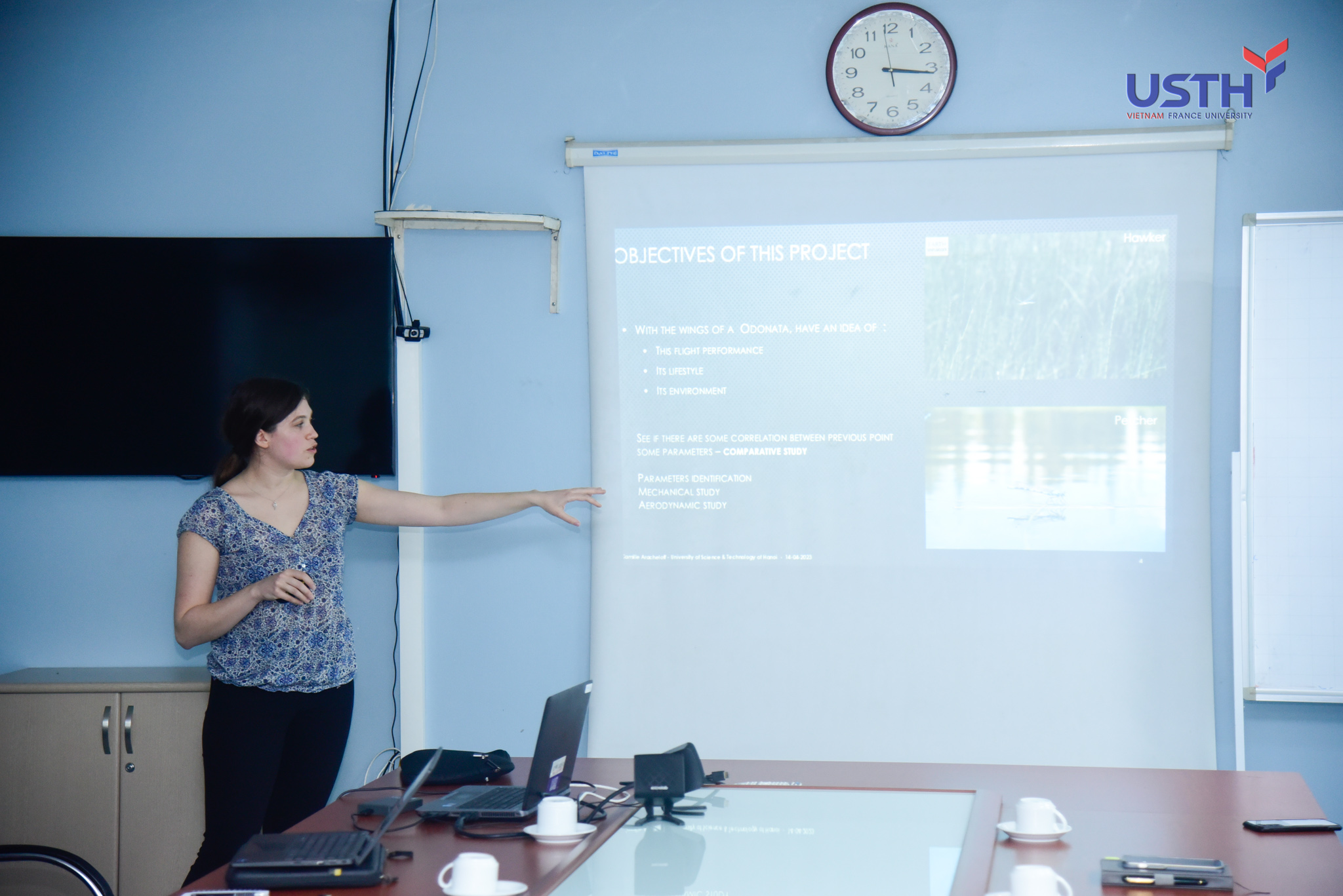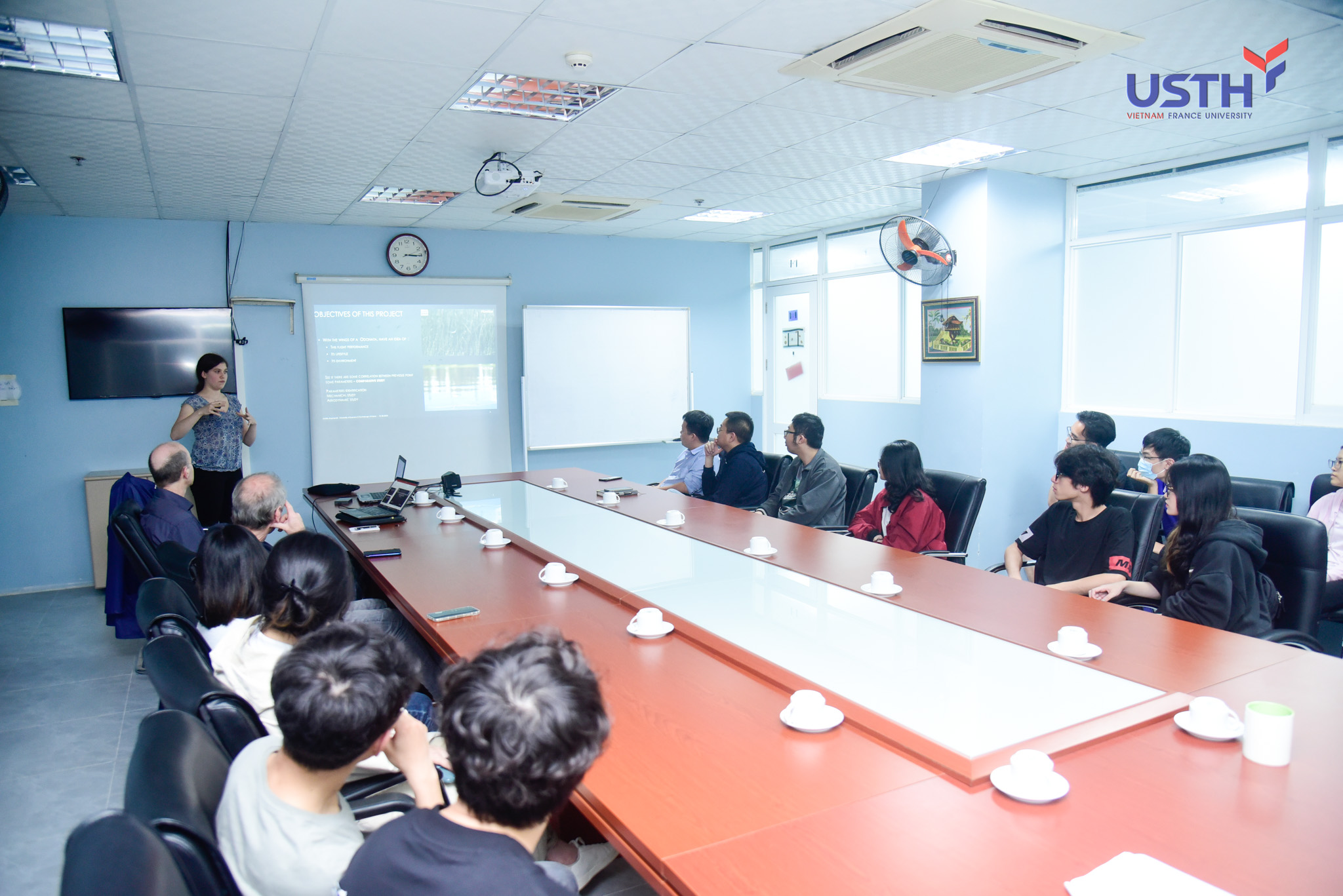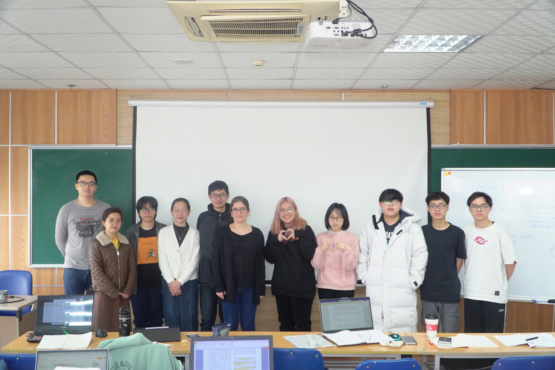On April 14, 2023, Department of Advanced Materials Science and Nanotechnology held a seminar on “The flight of Odonates: Mechanical study of the wings”. It featured a presentation by Camille Arachelloff, a PhD student from the Institute of Systematics, Evolution, and Biodiversity, National Museum of Natural History in Paris, France.
The seminar attracted the participation of students and lecturers from different departments of USTH.
In her presentation, Camille Arachelloff shared the results of her research on the mechanical study of the wings of odonates during their flight.
Odonata (dragonfly and damselfly) exhibit impressive flight abilities. They can perform many different maneuvers such as zigzags, linear back and forth motion, sharp turns and quick accelerations. Those trajectories are the results of complex fluid-structure interactions where wing morphology has a prominent role, as shown in previous studies. Insect wings are heterogeneous structures composed of an elastic membrane and a network of veins that control the local stiffness of the wing. The size, geometry, vein pattern, and other wing characteristics strongly vary across the different phylogenetic lineages. Currently, there are about 6500 species of Odonata distributed on all continents, except Antarctica.

Her research aims at understanding the role of the different wing’s characteristics on the aerodynamic force production and connecting them with the flight modes of dragonflies. Such results could be extrapolated in evolutionary perspective, starting from early apparitions of the first Odonatoptera lineages in the early late Carboniferous, with special features including gigantism.
She and her colleagues perform a comparative study of dragonfly wings from 15 genus using vibrational tests to determine the resonance frequency. They then examine the variation of those resonance frequencies with respect to key wing parameters such as the aspect ratio, the relative positions of the nodus and pterostigma.
After the presentation, Camille Arachelloff addressed the questions from the participants and thanked them for attending the seminar.
For many years, the study of animal flight has provided valuable insights into the design of advanced materials for a wide range of applications from aerospace to robotics. Researchers have looked at the unique characteristics of animal wings, such as their shape, flexibility, and texture. By understanding the mechanisms that allow animals to fly, researchers can develop new materials or improve existing ones that are more durable, flexible, and efficient in different environments.
Some moments of the seminar:










